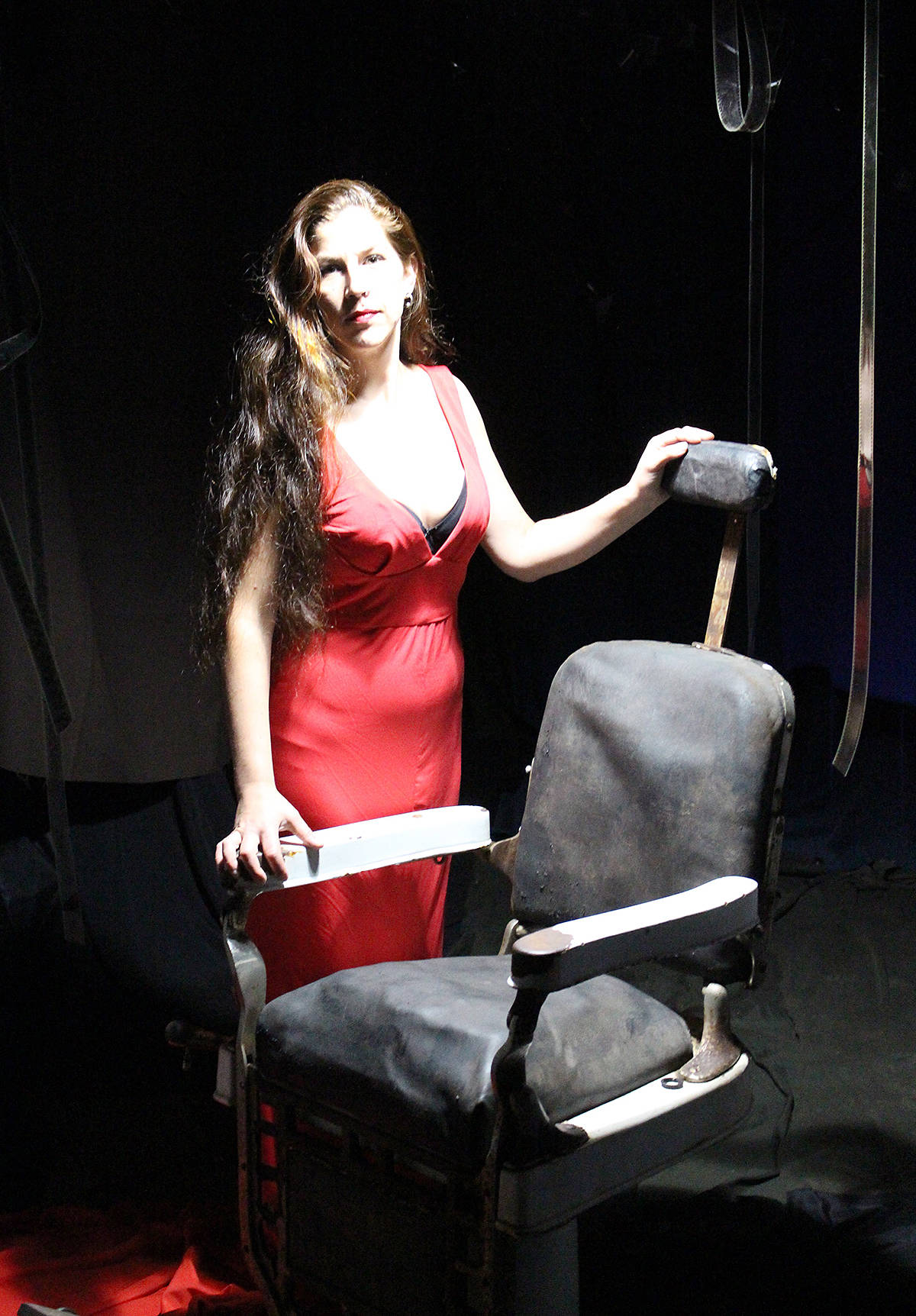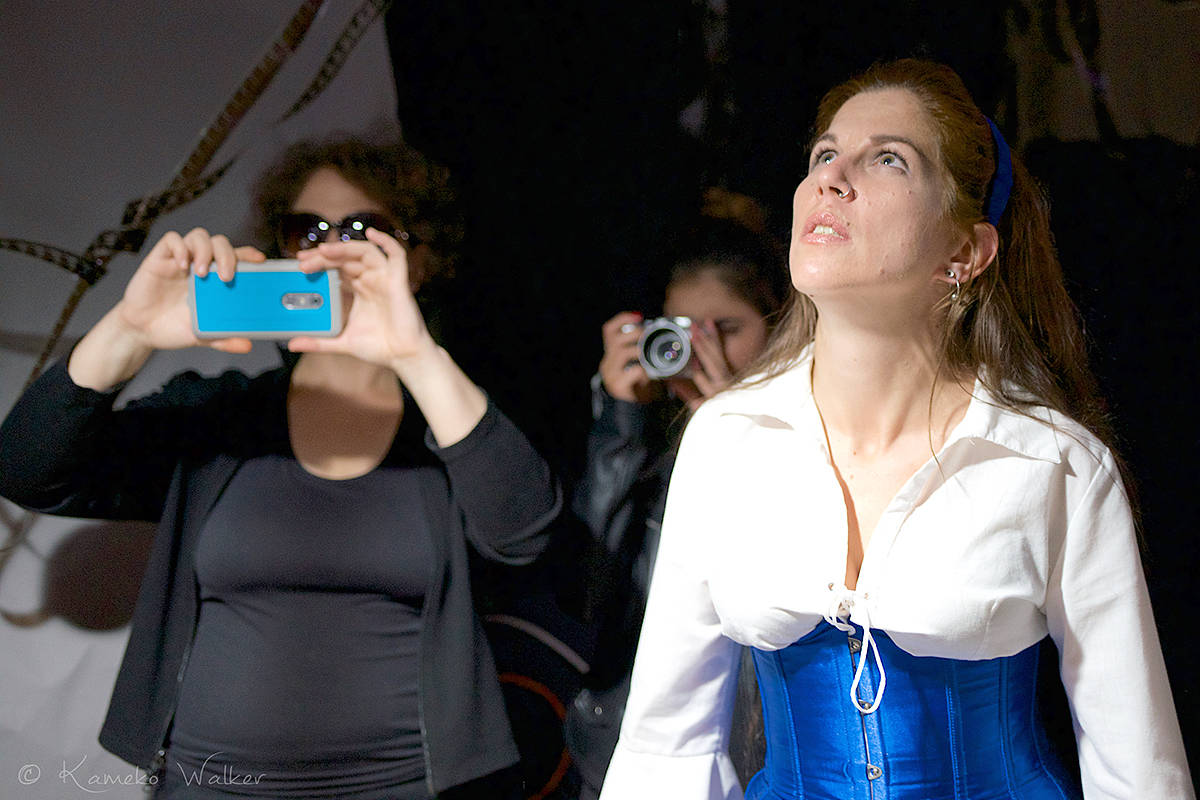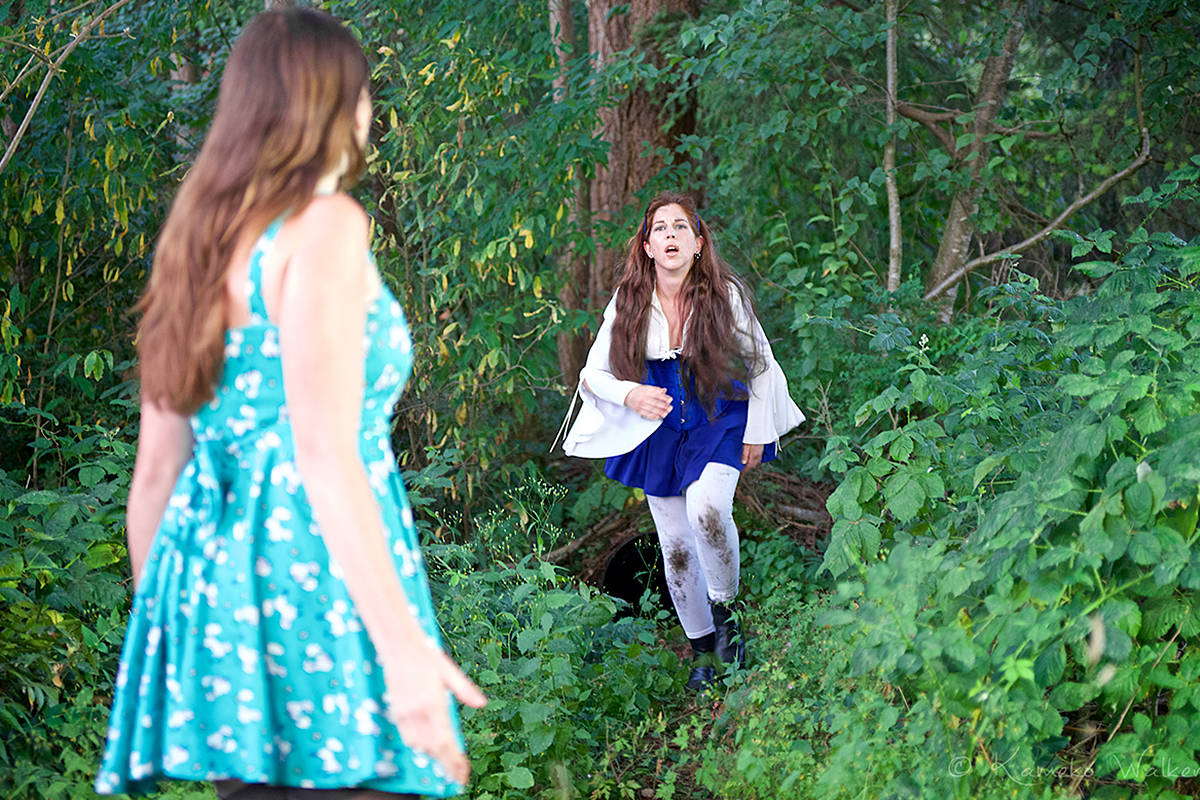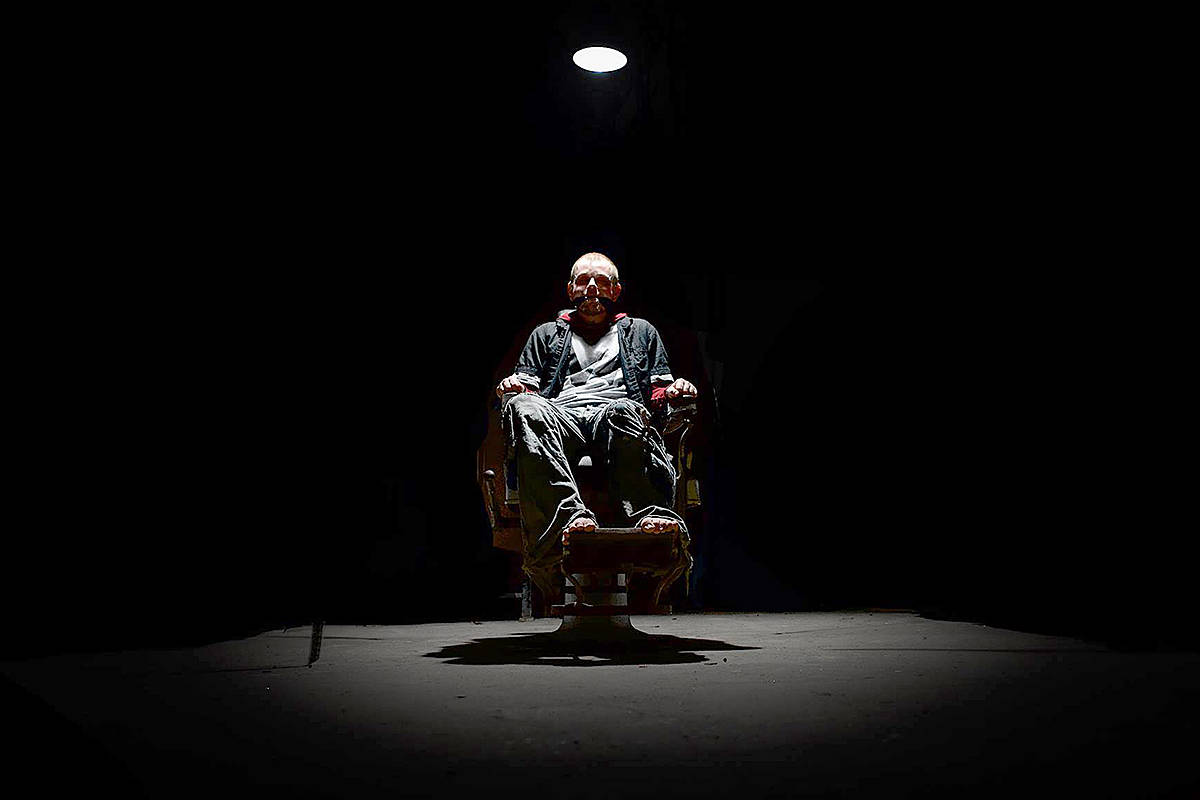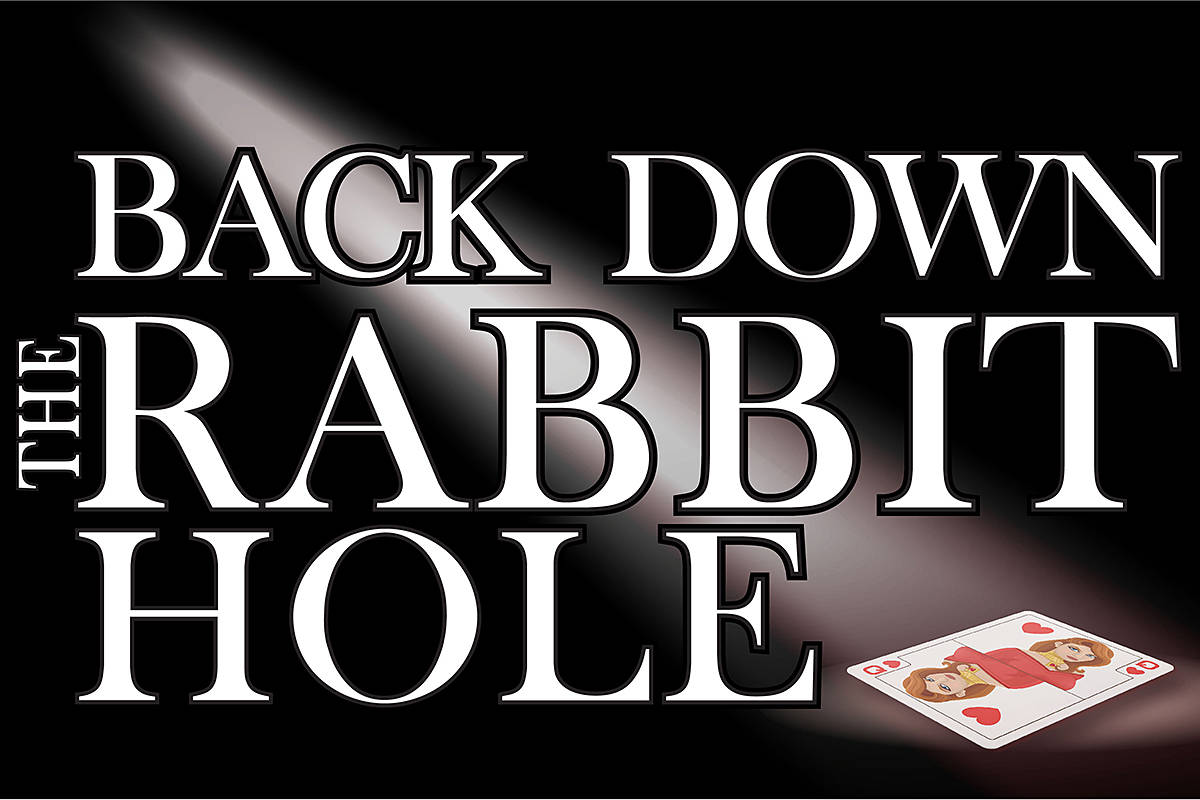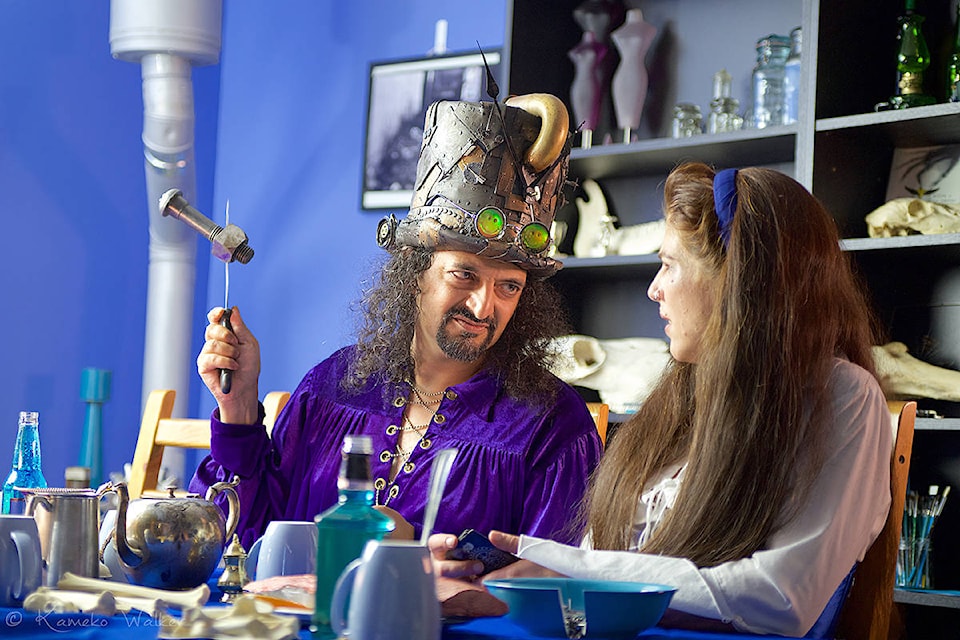Langley filmmaker Susan Cormier is at the tail end of creating Back Down the Rabbit Hole, what she calls “a unique and eye-opening film” about youth bullying.
The phenomenon of youth bullying drew international media attention following the deaths of Reena Virk, who was killed by her tormentors, and several young people including Dawn-Marie Wesley, Kelly Yeomans and Amanda Todd who committed suicide after being bullied.
Since then, dozens of movies, documentaries, and shows about bullying – including the recent 13 Reasons Why – have exploded into mainstream media.
And with World Day of Bullying Prevention just days away, on Oct. 1, and Canadian Bullying Awareness week in Canada during mid November, Cormier said she’s excited to soon be sharing her film about youth bullying.
But Back Down the Rabbit Hole, which has been a few years in the making, is “unique,” said Cormier, a Metis writer and multi-media artist who grew up on the outskirts in the rural town of Salmon Arm.
“Like many people, I was bullied by multiple people from grade school through graduation. Junior high was especially difficult,” she said.
“At that time, bullying was considered an unavoidable part of growing up; it was accepted as a rite-of-passage young people were expected to tolerate.”
In the years since, she’s seen countless anti-bullying organizations formed, movies produced, and public awareness campaigns created.
“But, I noticed two huge gaps in the information being publicly shared with the public. First, there was little to no information about how to prevent or stop bullying. Second, most of the information focused on the people who were being bullied and its effects on them. No one was looking closely at the actual source of the bullying: the people doing the bullying,” she said.
While most other films and shows on the subject are about the experience of being bullied and its effects on the bullied person, her film attempts to “myth busts the effectiveness of common techniques used to respond to bullying, and proposes a method to actually prevent and stop bullying,” she said.
“I decided to seek out people who had actively bullied others in their youths. Instead of examining the symptoms of the problem as so many others had done. I wanted to dig down and find its roots, which I believed would point the way to a solution,” she shared.
In addition to being the writer, director, producer, and set designer, Cormier is also the lead actor in this film.
Inspired by Wonderland
Funded by the Canada Council for the Arts, this film began as an independent research project involving more than 600 participants who had been involved in bullying.
A survey of 57 questions and a related interview explored whether tactics commonly used to respond to bullying – such as ignoring the bully, fighting back, or telling an adult – were actually effective in practice.
The results of this research were analyzed and used to develop what she hopes will be an entertaining and informative film script.
Back Down the Rabbit Hole takes place in Wonderland, a bizarre world inspired by Lewis Carroll’s iconic Alice’s Adventures in Wonderland and designed to replicate the complex, colourful structure of youth society.
In this film, shot in Langley, Alice is the baffled girl-next-door trying to escape the domineering Red Queen’s relentless abuse of her.
The White Rabbit, Caterpillar, Mad Hatter, and The Knave of Hearts are Alice’s friends. The film also features other bullied people, and members of the surrounding community.
The individual scenes are each based on Alice’s classic adventures. After myth busting many of the common misconceptions about bullying, the narrator (the enigmatic and wise Cheshire) outlines three concepts we need to know and teach, and a five-step action plan for preventing and stopping bullying within a community or organization, Cormier said.
The film is currently in the editing studio and after its completion it will be touring the film festival circuit then presented to educators and people working with youth and teens.
The date of release is still unknown.
The film stars what Cormier calls an eclectic mix of local actors and theatrical artists.
“Back Down the Rabbit Hole is a colourful, surreal look at the world of youth society and the dynamics of bullying.”
Who is the creator
Cormier pursued a degree in Literature at the Okanagan University College, then spent 20 years in the arts district of East Vancouver, where she developed her creative writing skills.
She has won or been shortlisted for such writing awards as CBC’s National Literary Award, Arc Magazine’s Poem of the Year, Anvil Press/SubTerrain Magazine’s Lush Triumphant, and the Federation of B.C. Writers’ Literary Writes.
Her writing has appeared in publications including Blood and Aphorisms New Fiction, Atlantis: A Women’s Studies Journal, West Coast Line, Arc: Canada’s National Poetry Magazine, and several anthologies including Rocksalt: An Anthology of Contemporary B.C. Poets and Lilly Ledbetter: Women Poets Occupy the Workplace.
Her first short film, this bleeding place, has screened around the world at festivals including the Montreal World Film Festival, the herland Feminist Film Festival, and the Aboriginal Kaleidoscope film tour, and has been included in the curriculum of two training programs for domestic violence intervention workers.
Her second video, turtleheart, premiered at the Zebra Poetry Film Festival in Berlin.
She moved to Langley in 2015, to focus on researching and developing the feature-length film, and currently resides in South Langley, where she and her partner, Bryant Ross, spend their summers beekeeping.
The film is currently in the editing studio, and Cormier said once completed it will tour the film festival circuit, and be resented to educators and people working with youth and teens.
Highlights from the creator
In her own words, Cormier answers a few questions.
Why did you decide to make this film?
Like many people, I was bullied by multiple people from grade school through graduation. Junior high was especially difficult. At that time, bullying was considered an unavoidable part of growing up; it was accepted as a rite-of-passage young people were expected to tolerate.
I’d been following the tragic story of Reena Virk since she was bullied to death by her peers in 1997. I was pleased to see that the resulting murder trial triggered an onslaught of media coverage of the issue of youth bullying. I had always wondered why a phenomenon that was as destructive and harmful as bullying had historically been ignored by the press, so it was a relief (albeit painful) to see it suddenly in front page headlines.
In the years since, I’ve seen countless anti-bullying organizations formed, movies produced, and public awareness campaigns created, but I noticed two huge gaps in the information being publicly shared with the public. First, there was little to no information about how to prevent or stop bullying. Second, most of the information focussed on the people who were being bullied and its effects on them. No one was looking closely at the actual source of the bullying: the people doing the bullying.
People who are being bullied don’t need to hear more about what it’s like to be bullied or how badly it affects them. That is the reality that they live every day. What they need is for the bullying to stop.
So I decided to seek out people who had actively bullied others in their youths. Instead of examining the symptoms of the problem as so many others had done, I wanted to dig down and find its roots, which I believed would point the way to a solution.
Your approach to decorating your film sets was…unusual. What did you do?
I believe strongly in showing gratitude to one’s roots, to those who provided support and opportunity during one’s lean years. So to pay homage to my community and artist friends, instead of decorating my film sets with things I designed or purchased for the film, I used objects that were created by my friends and fellow local artists. Every book on my characters’ bookshelves was written by someone I know and admire. Every CD on a coffee table is by someone I’ve heard play in a coffeeshop or have had long conversations about art production and philosophies with. Every poster on the walls of Wonderland’s buildings is from an event organized by a friend. Every painting and sculpture was made by someone whose hands I have shaken. The Wonderland I built was a mosaic of the creative and inspiring people around me.
It took an incredible amount of time to get permission to use each of these 200-ish items, but given how much these people have enriched my life and supported my art, the least I could do was give them a nod in the background of my film project.
What has been the strangest thing that has happened during this project so far?
A lot of this project has involved asking - for help, for permission, for feedback. I’ve received a lot of surprising responses, and a disappointingly high percentage of my queries have gone unanswered. But one response in particular reinforced my theory that you should always at least ask.
In designing the musical score of this film, I wanted to primarily use songs from my friends and fellow local artists. But I also daydreamed about including a song by a particular musician, a famous recording artist whose approach to art and creativity I greatly admire. I didn’t think I had a chance in a million of getting permission considering this man’s level of fame, but you never know unless you ask. So I researched an address and sent off a carefully-worded query.
I actually shrieked when I received a response from his lawyer granting me permission, subject to certain limitations, to use the song in my film. I was so honoured and grateful that I could barely type a cohesive reply.
I am not going to mention the musician’s name, as I want this film to stand on its own merits rather than ride on coattails by name-dropping, but I will say this much: his voice is unmistakeable, and a fan of his work will recognize the song before they read the credits.
What has been the most challenging part of this project so far?
The week right before we started shooting was physically and psychologically very difficult to get through. I was wearing a lot of hats - director, producer, production coordinator, lead actor, and more - and I was heavily relying on my partner, Bryant Ross, to help with physical labour and gathering supplies.
He is a firefighter, and exactly seven days before filming was to start, he was given an hour’s notice that he was being deployed to the front lines of the huge emergency fire situation in Williams Lake. I have great faith in the skills and training of our first responders, but he was being sent to a potentially life-threatening situation for an unknown amount of time, and I was very worried and upset.
With my partner and pre-production second-in-command gone, my workload nearly doubled. A few filmmaker friends suggested that I just delay the filming, but too many people had committed to the project’s schedule for me to back down. I slept only a few hours each night, ate while working, made phone calls while I was painting props, and moved furniture while I was trying to memorize my lines. Two friends each stopped by for a few hours to help during their own busy schedules, but the rest of the time I was alone. It was surreal and frantic; I was fueled by adrenaline and Gatorade.
One afternoon, I spent several hours atop a ten-foot ladder stapling long strips of movie film to a ceiling; when I finished, my fear of heights suddenly hit me and I couldn’t stop shaking and gagging. At another point, I somehow moved a 300-pound flat-bottomed vintage barber chair across a cement floor without hurting my back - I think I just put my hands on it and yelled in frustration. That whole week was punctuated by a lot of crying and yelling at walls.
I had to cut a lot of corners, but I got nearly all my pre-production work done in time. The filming went relatively smoothly, and halfway through our workweek Bryant came home safely, to my great relief.
And the night after shooting was done, I slept for thirteen hours straight.
Why should someone who works with children and teenagers watch this film?
It is in the best interest of a school, community or organization to take proactive action to counter bullying in its midst. Bullying is more than an unpleasant experience: it can severely affect an individual’s life in profound ways ranging from disengaging or dropping out of school or activities, to the development of lifelong mental health issues. This film encourages schools, organizations and communities to counteract bullying through a dedicated system of education and intervention.
Eliminating bullying would have a profound positive effect on not just individual young people, but also on the overall success of schools and organizations, and on the overall productivity of society at large. The amount of violence in schools and communities will be reduced. Schools whose students do not slip into academic failure or develop depression or drop out due to bullying will have a higher grade average and higher graduation rate and thus have a higher ranking for both prestige and funding. Organizations and clubs whose members remain enthusiastic and actively engaged will grow and succeed. If fewer people develop preventable mental health issues stemming from being tormented by their peers, less taxpayer funding will be needed to finance critical social services such as mental health services and homeless facilities. If more young people stay involved in activities they are talented in and graduate high school and thus can pursue postsecondary education and careers, the country as a whole will have a higher average household income and less poverty.
Many organizations have anti-bullying policies in place that state bullying will not be tolerated, but they fall short by not specifying what exactly should be done if and when bullying occurs. This film presents a five-step action plan that is clear and adaptable; it dovetails well with most organization’s existing anti-bullying policies, and focusses on education, growth and reparation rather than on punishment. Bullying is not a fact of life we must tolerate and endure; it is a behaviour that can be changed for the benefit of not just individuals but also of schools and organizations, and of our community and society at large.
If someone is being bullied, shouldn’t they just _____?
Most people are familiar with the most commonly-suggested responses to bullying. For example, the bullied person is encouraged to ignore it, to tell an adult, or to fight back. Or they are given reassuring explanations of why the bullying is taking place. Or the person doing the bullying is punished or told to stop.
Everyone who could potentially witness or be aware of youth bullying - parents, school administrators, counsellors, children and teens - needs to question these tactics. They need to know that these tactics do not work, and why they do not work. Their mindset needs to be shifted so they consider an alternate viewpoint rather than relying on stereotypes and empty clichés.
Putting the onus on someone who is being tormented to stop the abuse is unrealistic and unreasonable. Trying to convince someone to stop belittling or assaulting another by berating and punishing them is illogical and counterintuitive. Trying to incite change in youth social culture by imposing the values of adult culture is ineffective and ill-advised. We need to take a macro approach involving the broader community, rather than a micro approach that relies on an individual person to solve the social problem they and others are faced with.
Social media is a great way for people to promote awareness of an issue. What can someone do online to help the anti-bullying movement?
“Raising awareness” shows good intention and demonstrates one’s own concern for an issue, but does virtually nothing to solve the problem. Changing your Facebook profile to a certain picture or spreading simple catchphrases like “down with animal cruelty” or “stop the violence” shows that you personally are for or against a certain idea, but it does absolutely nothing to change things for the better. Most people are aware that certain behaviours are wrong. No one is going to see the catchphrase “stop bullying” and suddenly become aware that bullying is a problem - or suddenly change their ways.
What can we spread through social media that *will* make a difference? Information. Spread information that will increase knowledge and incite action.
In the case of bullying, instead of displaying catchphrases, logos or ribbons, put up lists of what specific behaviours are bullying, so people can recognize it when it happens and can avoid doing those things themselves. Share advice on what people can do when they see bullying happen. Post lists of resources - books, people, websites - people can turn to for information or help with bullying-related issues.
We’ve become a passive society that thinks that clicking ‘like’ or sharing an eye-catching photo will change the world. It won’t. We already have public education and advocacy for those affected by bullying; what we need now is prevention and intervention.
